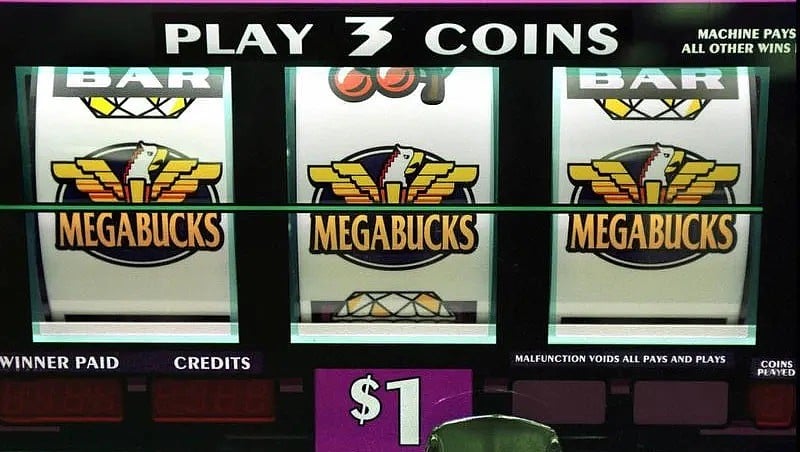If you’re a fan of the supernatural, this installment of our continuing series won’t shake your perspective. However, even if you think that curses can exist, the proof for this particular case is weak to nonexistent.
In January 2000, a 37-year-old cocktail server named Cynthia Jay-Brennan hit a Megabucks slot jackpot at the Desert Inn in Las Vegas, where Wynn and Encore are located now. The sum came to almost $35 million. She tied the knot with her boyfriend, and they arranged to explore the globe.
However, merely six weeks afterward, Clark Morse, an intoxicated driver with 16 previous arrests, crashed into the rear of Jay-Brennan’s vehicle while it was halted at a red light. The crash resulted in the death of her sister, Lela Anne Jay, 45, and broke Jay-Brennan's spine.
Morse, age 58, was sentenced to 28 years in prison. Jay-Brennan is permanently paralyzed from her upper chest down. She has spent way too much of her winnings on healthcare costs.
This hardly credible “Twilight Zone” horror tale is essentially the limit of the confirmable proof backing the legend of the Megabucks curse.
Mighty Bull
Megabucks refers to a linked network of tens of thousands of slot machines spread across numerous casinos in Nevada. Each time a Megabucks spin occurs, a fraction of the wager goes into a jackpot that can be won by anyone at any machine at any moment.
The jackpot begins at $10 million and rises by tiny increments every second until someone manages to align the three Megabucks symbols on a slot machine payout line. The greater the gap between jackpots, the larger the sum.
Megabucks was launched in March 1986 by slot maker International Game Technology (IGT) to regain some of the business that Nevada casinos were losing to state lotteries which promised mega-million jackpots, and to racetracks presenting substantial pay-out parlay bets. It was the first system of linked-progressive slot machines covering a wide area in the world.

To win a Megabucks slot jackpot, players must make the maximum bet possible on the spin. Then, all three Megabucks symbols must come up. (Image: victoriana.com)
In March 2003, a 25-year-old software developer from LA, traveling to Las Vegas for the NCAA basketball championship, transformed a $100 Megabucks slot spin into $39.7 million at the Excalibur. It remains the global record.
The reason we don’t know his name is that he was clever. You may ask to stay anonymous. While this won't shield you from the IRS, it can deter distant relatives and old friends from emerging to ask you for help with their student loans and to fund their fantastic new app concepts.
Nonetheless, selecting anonymity has a drawback: it enables misinformation, the internet's specialty, to spread regarding you and your future.
As the identity of the record mega-winner remains unknown, his life's events cannot be monitored. Thus, online posters complete the gaps with their own interpretations of Jay-Brennan’s narrative. The software engineer passed away not long after winning due to gang violence, an airplane accident, or by overdosing on drugs at the Palms. (Myths tend to provide details for increased credibility.)
These misleading stories spread so rapidly and widely that IGT even violated its own policy by announcing a statement regarding the winner: he was still healthy and alive. (However, naturally, they would claim that, wouldn't they?) They desire for you to continue playing!)
Myth Explained
The myth of the Megabucks curse actually has a psychological function.
"For some, it may serve as a consolation prize – a way of deriving psychological comfort from the roughly 49,999,999 out of every 50,000,000 spins that fail to produce the top award,” Anthony Lucas, a professor of casino management at UNLV and former gaming industry operations analyst, told Casino.org.
A nearly identical myth surrounds winners of state lotteries.
“The legends we tell are our way of mentally chewing over concepts that disquiet us, and very few feel at all comfortable with the realization of their feeling envious,” according to Snopes, which, it should go without saying, ascribes its “false” rating to the Megabucks curse.
More Important Issues to Consider
Even if the Megabucks curse were genuine — and by now, you understand it isn’t, correct? — being hit by lightning is a concern you should prioritize more. The National Weather Service states that your chances of experiencing that in a given year are 1 in 1.2 million. The chances of you winning Megabucks on any particular spin are roughly 1 in 50 million. That’s 41 times more unlikely.
“To use your analogy, it’s like getting struck by lightning while sitting on your living room couch,” Lucas said.
In total, 22 individuals have claimed Megabucks jackpots surpassing $10M over the last 16 years. Since most opted to stay anonymous, it cannot be definitively proven that terrible things haven't occurred to many of them. However, the argument is irrelevant. Observe any group of 22 random non-Megabucks winners for a sufficient duration, and astonishingly negative events will occur to a large number of them.
As the late Doors vocalist Jim Morrison expressed, “Nobody here escapes alive.”
In the case of a Megabucks winner who opted to forgo anonymity, an exceptionally positive event occurred for him.
Elmer Sherwin, a 76-year-old former World War II soldier, won $4.6M on the inaugural day of the Mirage in 1989. (This occurred prior to the minimum payout being set at $10 million.) In 2005, after reaching the age of 92 despite enduring “the curse,” he won another Megabucks jackpot, this time totaling $21.1 million, at the Cannery.
“That’s like getting struck by lightning while sitting on your living room couch without a cloud in the sky,” Lucas said.


